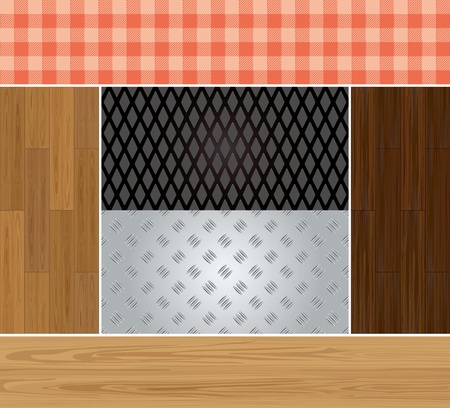The Roots of British Colour Sensibility
To truly appreciate the classic British colour palette, one must first delve into its rich historical and cultural tapestry. The evolution of British colour sensibility can be traced back to the restrained elegance of the Georgian period, a time when subtle hues and muted tones reflected both social decorum and architectural harmony. During this era, soft greys, powdery blues, sage greens, and delicate creams were favoured in both stately homes and townhouses, reflecting a preference for understated refinement that still resonates in British interiors today. As Britain moved into the Victorian age, however, a dramatic shift occurred. The Industrial Revolution not only introduced new pigments but also transformed aesthetic tastes. Victorians embraced deeper, more saturated colours—think oxblood reds, forest greens, mustard yellows, and rich navy blues—mirroring the burgeoning confidence and eclecticism of the era. Ornate wallpapers and bold contrasts became hallmarks of middle-class aspiration. These evolving preferences were not solely about fashion; they revealed much about British society’s shifting values and global influences. From Georgian restraint to Victorian exuberance, each period left an indelible mark on the national approach to colour—a legacy that continues to influence British design sensibilities in the present day.
Influence of British Landscape and Weather
The classic British colour palette is inextricably linked to the nation’s unique natural environment. The muted skies, rolling countryside, and ever-changing weather patterns have collectively shaped a distinctive approach to colour selection, both historically and in contemporary design. Britain’s geographic position means it is often enveloped in overcast greys, gentle mists, and soft rain—a climate that creates a particular quality of light and subtlety in natural tones.
Unlike the sun-drenched vibrancy found elsewhere in Europe, British landscapes evoke quieter, more restrained hues. This manifests in interiors, textiles, and architecture through the widespread use of understated colours—think sage greens, slate blues, muddy taupes, and gentle creams. These shades mirror the moody skies above Dartmoor or the subdued greens of the Lake District after rainfall.
How Weather Translates to Colour Choices
Weather Element |
Landscape Feature |
Palette Influence |
|---|---|---|
Overcast Skies |
Moors & Highlands | Pale greys, smoky blues |
Misty Mornings |
River Valleys | Soft whites, muted greens |
Rainy Days |
Woodlands & Meadows | Damp earth browns, mossy greens |
Golden Hour Sunlight |
Rolling Hills | Warm ochres, subdued yellows |
This palette reflects not only aesthetic preference but also practical adaptation: softer tones are less likely to clash with low natural light and can make homes feel warmer and more inviting amidst frequent drizzle. In summary, the characteristic restraint of British colour palettes is a nuanced response to the landscape’s shifting moods—a celebration of subtle beauty drawn from everyday weather and scenery.

3. Role of Social Class and Architecture
British colour palettes have long been shaped by the interplay between social hierarchy and architectural trends, creating a visual language that speaks volumes about class and aspiration. In grand stately homes, such as those found in the English countryside or along Londons exclusive squares, colour choices were more than decorative—they conveyed wealth, power, and education. Rich hues like deep crimsons, forest greens, and Wedgwood blues adorned drawing rooms and libraries, often complemented by intricate plasterwork and gilded details. These colours were selected not only for their aesthetic appeal but also for their ability to reflect candlelight and signal both tradition and modernity to guests.
Conversely, the rise of terraced houses during the Georgian and Victorian periods introduced a new paradigm in British urban living. Here, colour palettes became more restrained due to practicality and changing tastes among the burgeoning middle class. Subtle stone greys, sage greens, and muted ochres dominated exteriors, while interiors favoured lighter creams and pastel shades, maximising natural light within compact rooms. The choice of paint or wallpaper was a subtle nod to respectability—never too bold as to be considered garish, yet carefully chosen to distinguish one’s home from neighbouring properties.
Throughout British history, access to certain pigments was dictated by wealth and trade routes. For example, ultramarine blue—made from lapis lazuli—was once reserved for the most prestigious rooms due to its expense. Meanwhile, working-class homes often used locally available materials: limewash with earth pigments or distemper finishes that offered a softer appearance. Over time, these distinctions softened as mass production made a broader range of colours accessible to all classes, yet echoes of this historical stratification can still be seen in the careful curation of period-appropriate palettes in heritage properties today.
Thus, every brushstroke across Britain’s architectural landscape tells a story—not just of design preferences but of evolving social structures and aspirations encoded in colour.
4. Heritage Paint Brands and Enduring Hues
When delving into the story of classic British colour palettes, it is impossible to overlook the pivotal role played by heritage paint brands. Among these, Farrow & Ball stands out as a guardian of tradition, renowned for its meticulous approach to both colour formulation and historical accuracy. Established in Dorset in 1946, Farrow & Ball has become synonymous with quintessentially British interiors, offering an array of shades inspired by stately homes, Georgian townhouses, and rural cottages alike.
Many of these brands have made it their mission to preserve hues rooted in centuries-old practices, such as the muted greens of the Arts and Crafts movement or the chalky blues found in Regency drawing rooms. By researching original pigments and collaborating with institutions like the National Trust, they ensure authenticity and continuity. This dedication not only maintains Britain’s design heritage but also makes it accessible to contemporary homeowners eager to imbue their spaces with a sense of history.
Influence on Modern Interior Design
The impact of these manufacturers extends beyond simply providing paint; they actively shape how Britons perceive and use colour in their homes. The restrained elegance of Elephant’s Breath, the deep sophistication of Railings, or the gentle warmth of Setting Plaster—all curated by Farrow & Ball—have become shorthand for a timeless British aesthetic that values subtlety and character over fleeting trends.
Notable Heritage Paint Brands and Signature Colours
| Brand | Established | Signature Shades | Cultural Associations |
|---|---|---|---|
| Farrow & Ball | 1946 | Cornforth White, Hague Blue, Dead Salmon | Georgian refinement, Arts & Crafts revival |
| Little Greene | 1773 (roots) | Pleat, Livid, Celestial Blue | Regency vibrancy, period restoration |
| The Paint & Paper Library | 1996 | Scree, Stone IV, Blue Blood | Contemporary interpretations of heritage palettes |
| Crown Paints (Heritage Range) | 1777 (roots) | Pale Celadon, Mallard Green, English Rose | Edwardian elegance, Victorian opulence |
A Lasting Legacy on British Homes
The continued popularity of these enduring hues speaks to a collective desire to honour the past while living comfortably in the present. Through careful curation and storytelling, heritage paint brands offer more than just colour—they provide a direct link to Britain’s rich cultural tapestry, allowing each wall painted to become part of an ongoing narrative.
5. Contemporary Interpretations and Trends
Today’s British designers approach classic colour palettes not as static relics, but as living sources of inspiration. The characteristic muted greens, deep blues, and rich ochres—once rooted in Regency parlours or Victorian drawing rooms—are being reimagined for contemporary spaces, blending heritage with modern sensibilities. This reinterpretation is particularly evident in how designers pair time-honoured hues with fresh, unexpected accents or update them through innovative finishes and materials.
Heritage Meets Modern Living
In the UK, there is a deep respect for tradition, yet an equally strong appetite for individuality and innovation. Designers often take cues from historic paint brands like Farrow & Ball or Little Greene, whose carefully curated shades echo Georgian or Edwardian tastes. However, rather than recreating period interiors verbatim, they use these colours to anchor contemporary schemes—combining, for instance, a stately ‘Railings’ blue with sleek Scandinavian furnishings or offsetting a ‘Pigeon’ green with industrial lighting. This fusion pays homage to Britain’s layered aesthetic history while acknowledging modern lifestyles.
Sustainable Practice and New Materials
Another significant influence on today’s palettes is sustainability. With growing awareness of environmental impact, many British designers now prioritise eco-friendly paints and natural pigments, reviving traditional limewashes or plant-based dyes for their low toxicity and nuanced depth. These practices echo the resourcefulness of past generations while aligning with current values around ethical sourcing and longevity—a distinctly modern take on classic style.
Forward-Looking Yet Familiar
The result is an evolving palette that feels both forward-looking and reassuringly familiar. Contemporary British interiors frequently juxtapose vintage elements—like panelled walls or antique brass—with crisp whites or bold pops of colour. This approach creates spaces that are unmistakably British: respectful of history yet confidently adapted for the present day. In essence, the classic British colour palette continues to thrive by embracing change while staying rooted in cultural memory—a testament to its enduring relevance in design.


